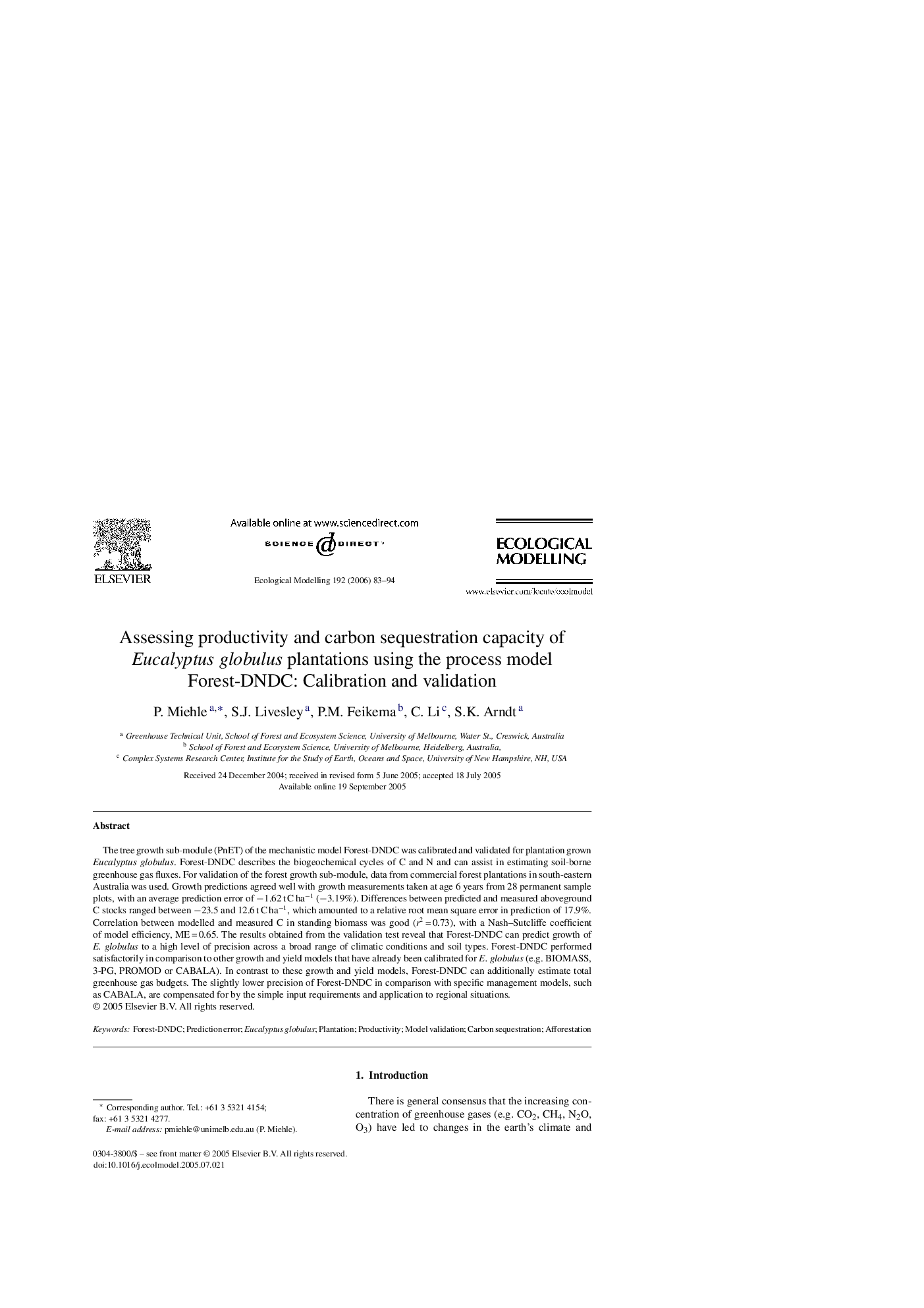| کد مقاله | کد نشریه | سال انتشار | مقاله انگلیسی | نسخه تمام متن |
|---|---|---|---|---|
| 4379126 | 1617569 | 2006 | 12 صفحه PDF | دانلود رایگان |

The tree growth sub-module (PnET) of the mechanistic model Forest-DNDC was calibrated and validated for plantation grown Eucalyptus globulus. Forest-DNDC describes the biogeochemical cycles of C and N and can assist in estimating soil-borne greenhouse gas fluxes. For validation of the forest growth sub-module, data from commercial forest plantations in south-eastern Australia was used. Growth predictions agreed well with growth measurements taken at age 6 years from 28 permanent sample plots, with an average prediction error of −1.62 t C ha−1 (−3.19%). Differences between predicted and measured aboveground C stocks ranged between −23.5 and 12.6 t C ha−1, which amounted to a relative root mean square error in prediction of 17.9%. Correlation between modelled and measured C in standing biomass was good (r2 = 0.73), with a Nash–Sutcliffe coefficient of model efficiency, ME = 0.65. The results obtained from the validation test reveal that Forest-DNDC can predict growth of E. globulus to a high level of precision across a broad range of climatic conditions and soil types. Forest-DNDC performed satisfactorily in comparison to other growth and yield models that have already been calibrated for E. globulus (e.g. BIOMASS, 3-PG, PROMOD or CABALA). In contrast to these growth and yield models, Forest-DNDC can additionally estimate total greenhouse gas budgets. The slightly lower precision of Forest-DNDC in comparison with specific management models, such as CABALA, are compensated for by the simple input requirements and application to regional situations.
Journal: Ecological Modelling - Volume 192, Issues 1–2, 15 February 2006, Pages 83–94